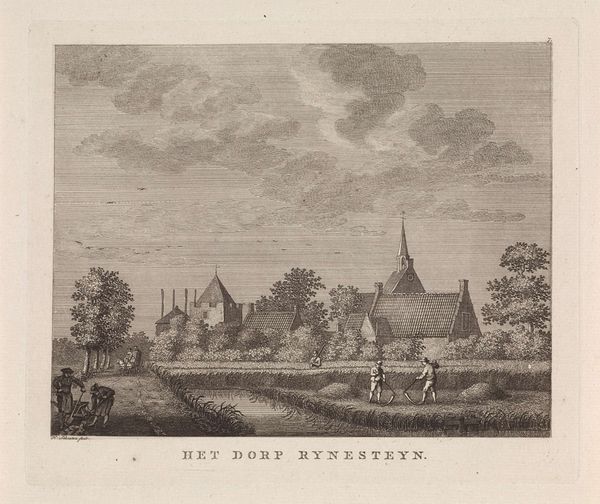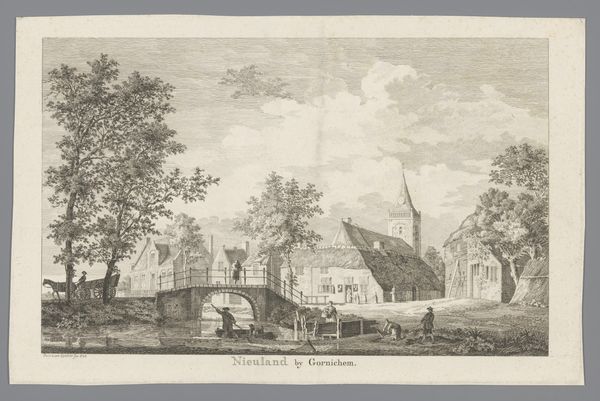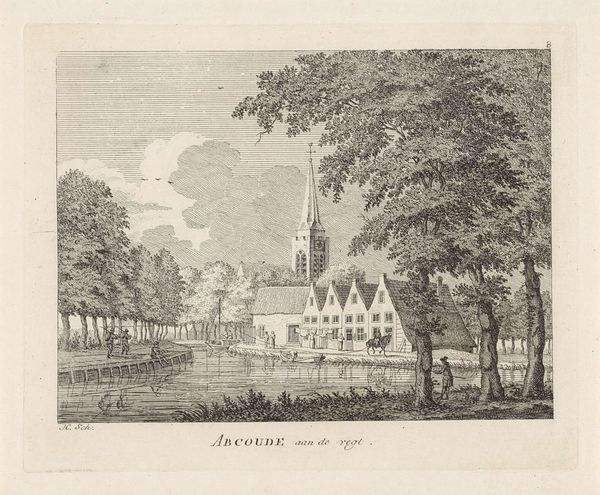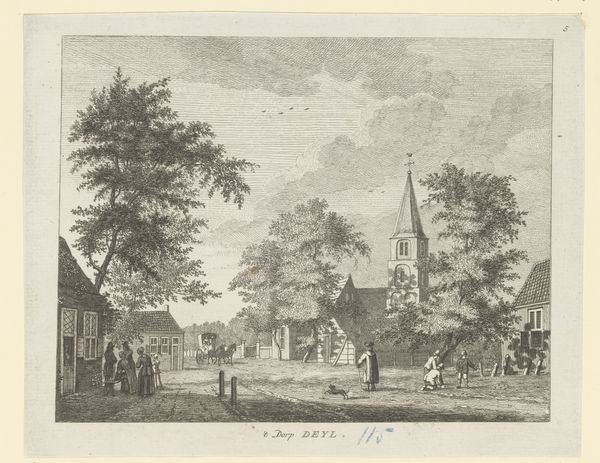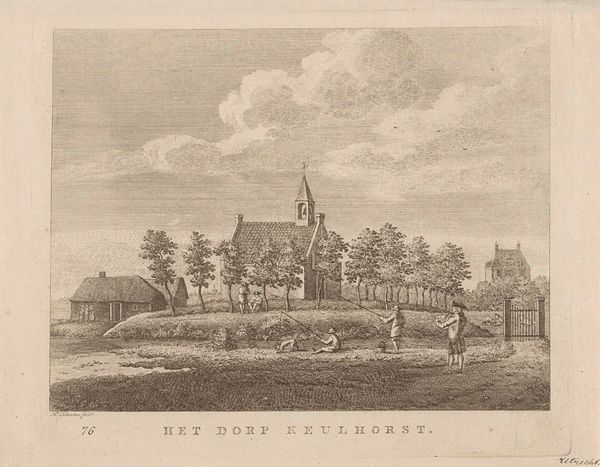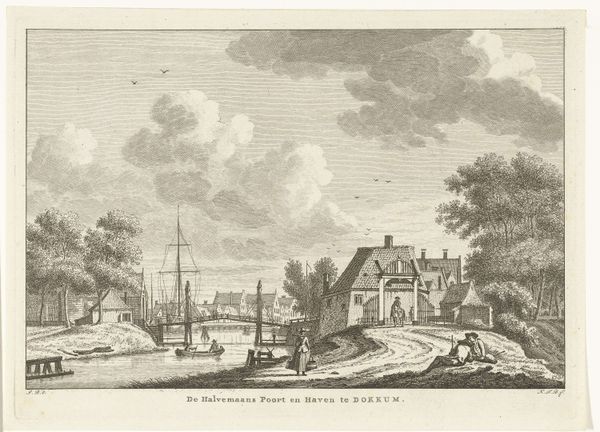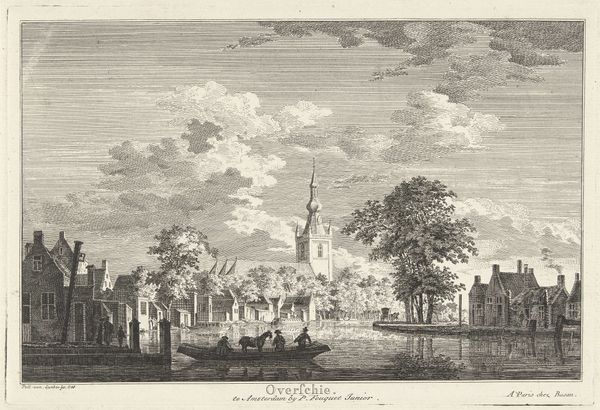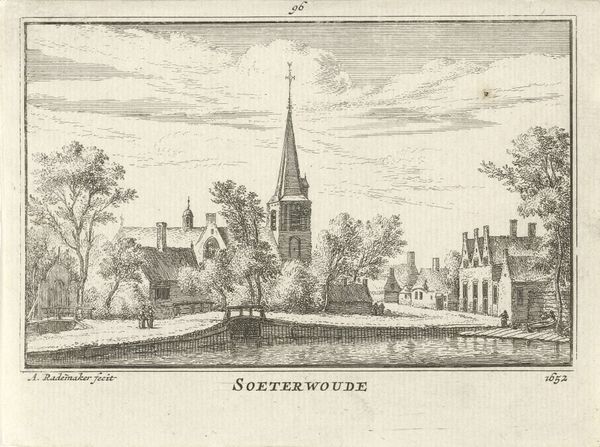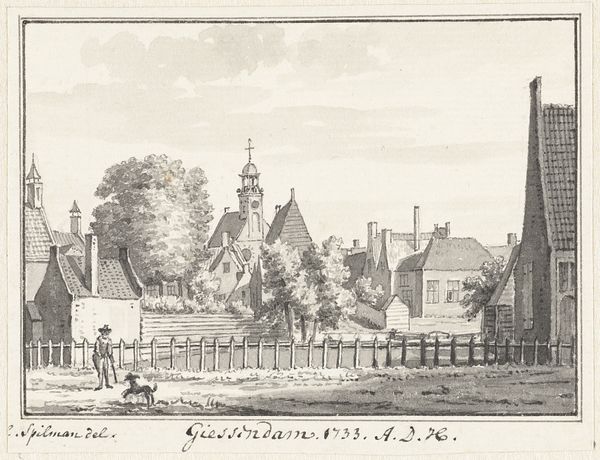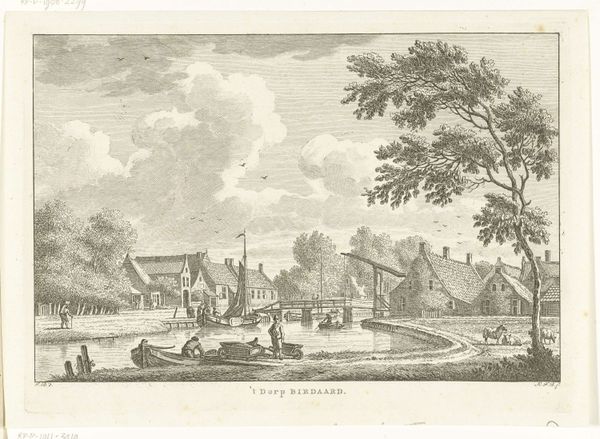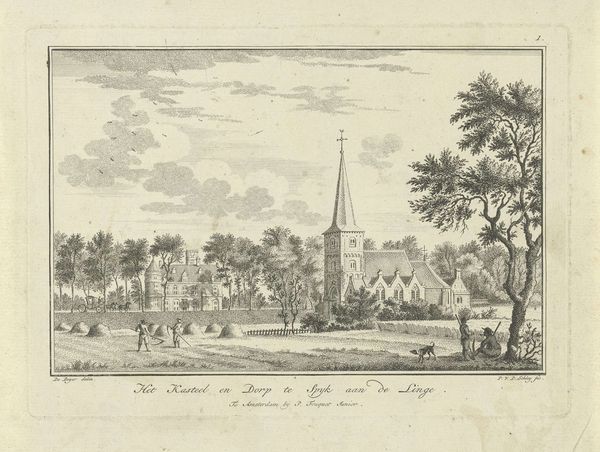
print, engraving
#
dutch-golden-age
# print
#
old engraving style
#
landscape
#
19th century
#
cityscape
#
genre-painting
#
engraving
Dimensions: height 176 mm, width 211 mm
Copyright: Rijks Museum: Open Domain
Curator: Welcome to "Gezicht op Mijdrecht," a print made by Hermanus Petrus Schouten sometime between 1795 and 1805. It’s currently held at the Rijksmuseum. Editor: It’s a peaceful scene, almost idyllic. A snapshot of village life. I'm struck by how this snapshot of 18th century life is memorialized as art, instead of, say, another image of nobility or war. What kind of story do you see unfolding within this image? Curator: The Dutch Golden Age wasn't golden for everyone, of course. But images such as this do two things at once. First, it subtly shapes our understanding of the "common man" through idealization. Secondly, images like this divert conversations about how this so called 'Dutch Golden Age' came to be through merchant exploitation, or colonial activities, and who specifically got to benefit from its fruits. Consider the family standing in the foreground: are they truly representative of the demographics and economic realities of Mijdrecht at the time? What do you think? Editor: That's an interesting question... probably not, now that you mention it. They seem a bit too neatly dressed, perhaps? What might Schouten be trying to tell us, or hide from us, through this scene? Curator: Perhaps Schouten, by focusing on what seems like everyday life, is trying to normalize social hierarchies or power structures. The emphasis on simple pleasures could be seen as a way to sidestep larger conversations about wealth disparity or the exploitation of resources that enabled the "Golden Age." We must then be critical when looking at nostalgic depictions such as these; who is afforded nostalgia, and at whose expense? Editor: That’s fascinating; it gives the artwork a completely different layer of meaning. I’ll never look at pastoral scenes the same way! Curator: Precisely! By questioning the narratives presented, we can gain a more nuanced understanding of both the artwork and the historical context in which it was created.
Comments
No comments
Be the first to comment and join the conversation on the ultimate creative platform.
